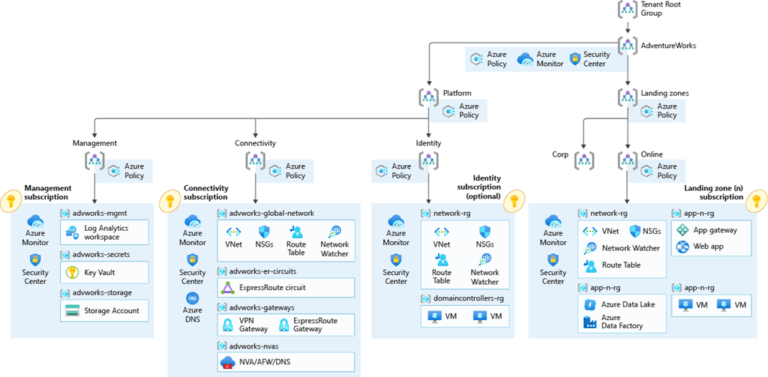
The field of motorsport is undergoing a seismic shift, driven by the relentless march of technology. This transformation, exemplified by new racing design and technology, is not merely an evolution in speed and competition; it represents a confluence of advanced technologies like Artificial Intelligence (AI), the Internet of Things (IoT), and groundbreaking engineering.
I’m Ronald van Loon, an Intel Ambassador. We’ve seen several environments where competition becomes more dynamic every year and fans that support it get closer and more involved in the action. The same is true for the Airspeeder EXA Grand Prix, an electric flying vehicle racing series begun in 2022 and discussed in a recent episode of Technically Speaking: An Intel Podcast. This new era of motorsport transcends traditional boundaries, integrating cutting-edge tech to redefine transportation, safety, and environmental sustainability.
The Convergence of AI and IoT in Motorsport
AI and IoT are revolutionizing motorsport, offering levels of efficiency, safety, and performance previously unimaginable. In Airspeeder racing, AI is crucial for real-time analytics, collision avoidance, and safety protocols, managing complex race dynamics in milliseconds. IoT creates a connected ecosystem, ensuring seamless communication and real-time data transfer, essential for efficient race management. The integration of these technologies signifies a leap forward in how motorsport operates, making it more sophisticated, safer, and more connected.
Airspeeders also symbolize a significant advancement in automotive technology. Transitioning from hobby-grade drones to sophisticated flying machines, these vehicles are a testament to the rapid progress in this field. Their eventual adaptation to accommodate pilots is a significant step towards a future where flying cars are commonplace.
The deepening integration of AI and IoT in motorsport is a critical factor in its evolution. AI’s role extends beyond safety and race strategy; it’s also pivotal in vehicle diagnostics, predictive maintenance, and enhancing the spectator experience through advanced analytics and personalized content delivery. IoT’s role in creating a network of interconnected devices and sensors provides real-time monitoring and control, essential for the high-speed, high-stakes environment of motorsport.
Augmented Reality in Racing Dynamics
Augmented reality (AR) in racing dynamics blends the physical and digital, offering an immersive racing experience. AR tracks enhance the pilot’s experience and open new avenues for fan engagement and broadcast innovation. This technology is not just a gimmick; it’s a transformative tool that changes how races are conducted and experienced.
In other motorsports, AR technologies are integrated into helmet-mounted displays, providing drivers with crucial real-time data such as lap times, race position, and engine performance. This information is projected directly into their field of vision, ensuring minimal distraction and maximum situational awareness. For instance, in Formula 1, these displays overlay data with a latency of less than 100 milliseconds, crucial for real-time decision-making.
While encouraging innovation and an immersive experience in racing environments, augmented reality is not just a tool for enhancing race dynamics; it’s also emerging as a vital component in training and development. AR simulations provide pilots with realistic, immersive training environments, allowing them to hone their skills in a safe, controlled setting. This application of AR is a glimpse into the future of training in high-risk professions, where simulation and reality converge to provide comprehensive learning experiences.
Engaging a Broader Audience Through Esports
The integration of esports, a form of competitive video gaming, has rapidly evolved into a global phenomenon with physical racing is a strategic move to engage a broader audience. The esports side of Airspeeder is a testament to the sport’s adaptability and its embrace of modern entertainment trends. This synergy allows for a seamless transition between virtual and real-world racing, tapping into a new generation of racing enthusiasts and potential pilots. It also democratizes access to the sport, allowing individuals from diverse backgrounds to participate and potentially transition to real-world racing.
Esports tournaments, ranging from local contests to international web hosting championships, are often streamed live on platforms like Twitch and YouTube, attracting millions of viewers worldwide. These events not only feature professional gamers competing in popular games but also create a community experience through interactive viewership, where fans participate in live chats and social media discussions.
The inclusivity of esports is further enhanced by its appeal to a wide demographic, regardless of age, gender, or physical ability, making it uniquely positioned to connect people from different backgrounds. Additionally, the integration of virtual reality and augmented reality technologies in esports has started to offer even more immersive experiences, further broadening its appeal.
Societal Impact and Challenges: Beyond the Racetrack
The future of motorsport, as envisioned in the Airspeeder EXA Grand Prix, is a tapestry of innovation, weaving together speed, technology, and sustainability. It’s a future where AI, IoT, and advanced engineering converge to create not just a new form of racing, but a new form of transportation that could redefine our societal connections. Jack Withenshaw, Co-founder and Chief Commercial Officer of Airspeeder, believes, “We’re not just going racing; we’re starting a mobility revolution.” Jack’s statement captures the essence of this journey – a journey that’s about more than racing; it’s about shaping the future of our society.
The societal implications of these technological advancements are significant. Significant challenges exist when leveraging technology designed to advance enhanced mobility. Problem solving in a racing environment proves to be a valuable laboratory where technology can be tested in extreme conditions. As a result, the vision of a future where flying cars alleviate traffic congestion and redefine urban mobility is becoming increasingly realistic. This evolution in transportation technology has the potential to reshape our daily lives, influencing how we live, work, and interact.
While reducing clogged roads is a worthwhile endeavor, the implications of advanced transportation technologies extend beyond easing traffic congestion. They have the potential to transform urban planning, reduce carbon emissions, and create new economic opportunities. The development of flying cars and other advanced transportation modes could lead to more efficient, sustainable, and interconnected urban environments.
Environmental and Sustainability Focus
Sustainability is central to this technological revolution. The emphasis on electric mobility, reducing environmental footprints, and sustainable practices reflects a broader commitment to eco-friendly innovations. Companies taking a leadership role in sustainable computing and green technology play pivotal roles in supporting these initiatives.
Advancements in battery technology are important in sustainability as well as crucial for the success of electric motorsport, but they also pose significant challenges. Developing lightweight, high-capacity batteries that can withstand the rigors of high-speed racing is a complex engineering feat. This challenge is reflective of the broader issues facing the electric vehicle industry, where battery technology is a key determinant of success.
Racing Towards a Sustainable Future
The future of motorsport, as embodied by the Airspeeder EXA Grand Prix, is racing towards a sustainable, technologically advanced future. This journey is not just about faster cars and thrilling races; it’s about pioneering a new era of transportation that is safe, efficient, and environmentally responsible. The collaborations between technology companies and sports organizations offers hope in this transformative journey, signaling a future where technology and sustainability drive us forward, both on and off the racetrack.
By Ronald van Loon






